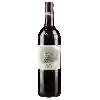
Winery Eugène ReullierChâteau de Maillet Bordeaux
In the mouth this red wine is a powerful with a nice balance between acidity and tannins.
This wine generally goes well with poultry, beef or veal.
Taste structure of the Château de Maillet Bordeaux from the Winery Eugène Reullier
Light | Bold | |
Smooth | Tannic | |
Dry | Sweet | |
Soft | Acidic |
In the mouth the Château de Maillet Bordeaux of Winery Eugène Reullier in the region of Bordeaux is a powerful with a nice balance between acidity and tannins.
Food and wine pairings with Château de Maillet Bordeaux
Pairings that work perfectly with Château de Maillet Bordeaux
Original food and wine pairings with Château de Maillet Bordeaux
The Château de Maillet Bordeaux of Winery Eugène Reullier matches generally quite well with dishes of beef, veal or game (deer, venison) such as recipes of savoyard matafans, sot- l- leaves or deer jig.
Details and technical informations about Winery Eugène Reullier's Château de Maillet Bordeaux.
Discover the grape variety: Ravat blanc
Interspecific crossing between Seibel 5474 (Seibel 405 x Seibel 867) and Chardonnay by Jean-François Ravat. After 1945, it was already considered a quality grape variety, and is now listed in the Official Catalogue of Vine Varieties, list A1.
Informations about the Winery Eugène Reullier
The Winery Eugène Reullier is one of of the world's great estates. It offers 131 wines for sale in the of Bordeaux to come and discover on site or to buy online.
The wine region of Bordeaux
Bordeaux, in southwestern France, is one of the most famous, prestigious and prolific wine regions in the world. The majority of Bordeaux wines (nearly 90% of the production Volume) are the Dry, medium and Full-bodied red Bordeaux blends for which it is famous. The finest (and most expensive) are the wines of the great châteaux of Haut-Médoc and the right bank appellations of Saint-Émilion and Pomerol. The former focuses (at the highest level) on Cabernet Sauvignon, the latter on Merlot.
The word of the wine: Old vines
There are no specific regulations governing the term "vieilles vignes". After 20 to 25 years, the yields stabilize and tend to decrease, the vines are deeply rooted, and the grapes that come from them give richer, more concentrated, more sappy wines, expressing with more nuance the characteristics of their terroir. It is possible to find plots of vines that claim to be a century old.














